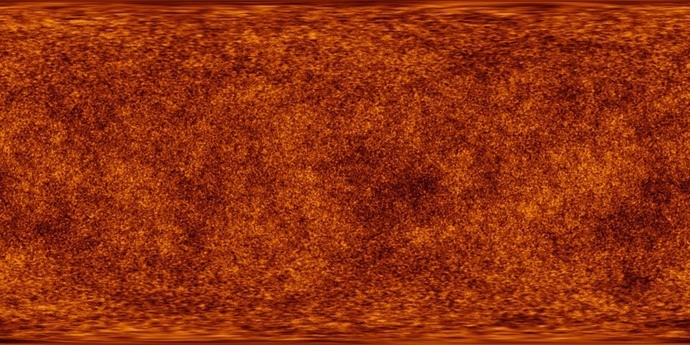https://www.universetoday.com/14620...discovered-in-the-early-universe/#more-146206
A Massive Rotating Disc Discovered in the Early Universe
If we want to understand how the Universe evolves, we have to understand how its large structures form and evolve. That’s why astronomers study galaxy formation. Galaxies are enormous structures of stars, planets, gas, dust, and dark matter, and understanding how they form is critical to understanding the Universe itself.
In 2017, astronomers working with ALMA (Atacama Large Millimeter/sub-millimeter Array) discovered an ancient galaxy. This massive rotating disk galaxy was born when the Universe was only about 1.5 billion years old. According to the most accepted understanding of how galaxies form and evolve, it shouldn’t exist.
But there it is.
The galaxy is known as DLA0817g, but it’s much easier-to-remember nickname is Wolfe’s galaxy, named after the late astronomer Arthur M. Wolfe. It’s the most ancient rotating disk galaxy astronomers have ever seen. By only 1.5 billion years after the Big Bang, Wolfe’s galaxy grew to 70 billion solar masses, about half as massive as the Milky Way.
There’s been some theoretical evidence that this type of galaxy might have existed this early in the Universe, but this is the first direct observational evidence.
A new study titled “A cold, massive, rotating disk galaxy 1.5 billion years after the Big Bang” presents these observations. Lead author of the study is Marcel Neeleman of the Max Planck Institute for Astronomy in Heidelberg, Germany. The paper is published in the journal Nature.
The Universe is about 13.8 billion years old. At first, it was just a hot, featureless plasma of electrons and protons, uniform in every direction. The challenge for cosmologists is to explain how all of that featureless mass combined into galaxies.

The early Universe was an undifferentitated plasma, too hot for normal matter to coalesce and form structures like galaxies. Credit: Planck/IPAC
more at link...................
A Massive Rotating Disc Discovered in the Early Universe
If we want to understand how the Universe evolves, we have to understand how its large structures form and evolve. That’s why astronomers study galaxy formation. Galaxies are enormous structures of stars, planets, gas, dust, and dark matter, and understanding how they form is critical to understanding the Universe itself.
In 2017, astronomers working with ALMA (Atacama Large Millimeter/sub-millimeter Array) discovered an ancient galaxy. This massive rotating disk galaxy was born when the Universe was only about 1.5 billion years old. According to the most accepted understanding of how galaxies form and evolve, it shouldn’t exist.
But there it is.
The galaxy is known as DLA0817g, but it’s much easier-to-remember nickname is Wolfe’s galaxy, named after the late astronomer Arthur M. Wolfe. It’s the most ancient rotating disk galaxy astronomers have ever seen. By only 1.5 billion years after the Big Bang, Wolfe’s galaxy grew to 70 billion solar masses, about half as massive as the Milky Way.
There’s been some theoretical evidence that this type of galaxy might have existed this early in the Universe, but this is the first direct observational evidence.
A new study titled “A cold, massive, rotating disk galaxy 1.5 billion years after the Big Bang” presents these observations. Lead author of the study is Marcel Neeleman of the Max Planck Institute for Astronomy in Heidelberg, Germany. The paper is published in the journal Nature.
The Universe is about 13.8 billion years old. At first, it was just a hot, featureless plasma of electrons and protons, uniform in every direction. The challenge for cosmologists is to explain how all of that featureless mass combined into galaxies.

The early Universe was an undifferentitated plasma, too hot for normal matter to coalesce and form structures like galaxies. Credit: Planck/IPAC
more at link...................
